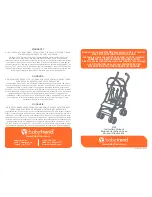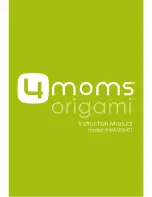
MODELS 8310HP AND 8310LP
PRESSURE REDUCING REGULATORS
SECTION l
l. DESCRIPTION AND SCOPE
The Model 8310 is a high capacity pressure reducing regulator with double seat design used to control downstream (outlet or
P
2
) pressure. Sizes are 1-1/2" (DN40), 2" (DN50), 2-1/2" (DN65), 3" (DN80) and 4" (DN100). With proper trim utilization, the
unit is suitable for liquid, gaseous, or steam service. Refer to Technical Bulletin 8310-TB for design conditions and selection
recommendations.
SECTION II
II. INSTALLATION
IOM-8310HP/LP-BASIC
11-08
6. Clean the piping of all foreign material including chips,
welding scale, oil, grease and dirt before installing the
regulator. Strainers are recommended.
7. In placing thread sealant on pipe ends prior to en-
gagement, ensure that excess material is removed
and not allowed to enter the regulator upon start-up.
8. Flow Direction: Install so the flow direction matches
the arrow cast on the body. Install an external sensing
line (1/2" O.D. (DN15) tubing minimum) from the 3/8"
(DN10) NPT connection in needle valve (39) to a point
downstream, preferably at gauge location. If regula-
tor pipe line is expanding to a larger pipe line, always
connect sensing line to the larger pipe line.
9. For best performance, install in well drained horizontal
pipe, properly trapped, if a steam service application.
Recommended Piping Schematic For
Pressure Reducing Station
CAUTION B
Installation of adequate overpressure protection
is recommended to protect the regulator and all
downstream equipment from damage in the event
of regulator failure.
1. An inlet block valve should always be installed.
2. If service application is continuous such that shut down
is not readily accomplished, it is recommended that
an inlet block valve, outlet block valve, and a manual
bypass valve be installed.
3. Pipe unions are recommended for NPT screwed instal-
lations to allow removal from piping.
4. An outlet pressure gauge should be located approxi-
mately ten pipe diameters downstream, and within
sight.
5. All installations should include a downstream relief
device if the inlet pressure could exceed the pressure
rating of any downstream equipment or the maximum
outlet pressure rating of the unit.
For welded installations, all internal trim parts, seals and
diaphragm(s) must be removed from regulator body prior
to welding into pipeline. The heat of fusion welding will
damage non-metallic parts if not removed.
NOTE: This does not apply to units equipped with
extended pipe nipples.
CAUTION A
INSTALLATION, OPERATION & MAINTENANCE MANUAL
Supply
@ P1
Outlet
@ P2
P1
SRV
Bypass
Model 8310HP or 8310 LP
Pressure Reducing Regulator
TR
TR
Blowdown-Drain
Blowdown-Drain
(Shaded portion for steam/condensate systems)


























